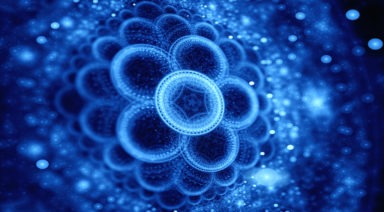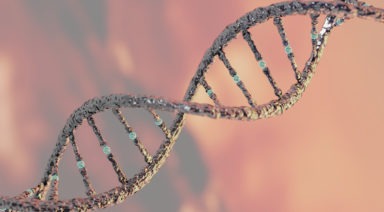Baking Soda and Apple Cider Vinegar: Why You’ll Never Go Back to Shampoo

Surprise, surprise. Your commercial shampoo may have ingredients that could have serious repercussions on your health.
There’s a reason that hair care professionals suggest washing your hair only once or twice a week.
Flip over your bottle of shampoo. One of the main ingredients in shampoo is Sodium Lauryl Sulfate, known as SLS. Is it on the back of the label? It’s likely there because it is a detergent, degreaser and foaming agent. It’s in more than your shampoo, however; it might be in your dishwasher detergent, toothpaste, bubble bath and other foaming home products. Also check your car wash soap, garage floor cleaners, and car engine degreasers.
SLS isn’t something you want hanging around your sensitive body. Skin irritation, hormone disruption, eye irritation, and eye deformities are all known results of SLS toxicity. If that’s not enough, it’s even possibly carcinogenic when paired with some of the other typical ingredients in shampoo.
Even if you dismiss the SLS risks as nothing to be concerned about, here’s another issue you’re your shampoo. As I said, SLS is a detergent and degreaser. This means it strips your scalp of the natural oils in it. “Good!” you might declare. “I don’t want oily hair!” Not so fast: those oils are actually healthy and there for a reason. When they get stripped, your scalp dries out along with your hair. That’s where conditioner comes in, to replenish and restore the damage. However, the natural way is nearly always better, and sadly, conditioner does not stay on your hair in the same way that your natural oil would.
Thus begins a vicious cycle. Once your scalp contains less oil, it senses the need for more oils to be produced. That’s why you may notice an oily scalp after just a few days of not washing it. Your scalp is going into overdrive, overcompensating for these necessary oils.
A breakdown of what you’re probably doing right now: wash your hair, strip the oils, put fake oils to reduce the damage, your scalp gets super oily the next day as a result, so you wash it again.
What can we do to break the cycle?
You can definitely switch over to SLS-free, toxin-free shampoo, but you might notice this is a little pricey. Thankfully, there’s a cheaper solution! Grab baking soda and apple cider vinegar on your way home, as well as the little travel-size squeeze bottles found in the dollar section.
Baking Soda “Shampooing”
Baking soda is a gentle alkaline compound effective for cleansing and removing build up from your hair. The typical formula is 1 tablespoon of baking soda for every cup of water, though you might want to play with it according your hair density and texture. Fine, thin or short hair may require less.
A good method is to use an 8 oz travel size squeeze bottle. Fill it up with the water and baking soda mixed together. Shake it up to dissolve the baking soda.
In the shower, squeeze the water/baking soda mix onto your head, starting with the crown and then all over the scalp. Thoroughly work it through with my hands, scrubbing the scalp and rubbing the hair.
You may notice a remarkable difference in this experience: no lather or foam. This doesn’t mean it isn’t working, however! It is, in fact, cleaning your hair in a much gentler, more natural way.
Leave it on for a minute or two and then rise as normal.
Apple Cider Vinegar Rinse
We’ve raved about apple cider vinegar before. It’s an amazingly multi-functional, mild acidic that is useful for detangling and clarifying, balancing the pH level of your hair, and sealing the hair cuticle. Use 1-2 tablespoons of apple cider vinegar to every cup of water. For dry hair, use closer to 2 tablespoons. For oilier hair, use 1 tablespoon or less. Again, you may want to play with it to see what works best for you.
Put the required amount of ACV as well as a cup or a cup and a half of water into a reused apple cider vinegar bottle. Shake it up thoroughly.
In the shower, starting at the crown of the head, pour just a little on top. Then, pour again while scrunching up the hair at the base of the neck and concentrate most of solution towards the bottom and ends of your hair.
Wait a minute or two and then rinse it out.
Important Note:
Your hair will probably go through a transition phase lasting anywhere from 2 to 8 weeks in order for all of the chemicals to wash out, as well as restoration for proper scalp oil balance. In the transition period, your hair may be a little flatter, duller, or greasier as your scalp finds its balance. Sticking it out for the 2 to 8 weeks will be entirely worth it, however, as many testify that it’s their best hair they’ve ever had.
You also may have to play your solutions for some time to get the right balance for your specific hair situation. If your hair is too dry, use less baking soda or try rinsing with honey instead of vinegar. If your hair is too oily, use less vinegar, or try rinsing with lemon juice, or try not using a rinse at all.
Herbology and Your Health: Well-Being From the Ground Up

We often think of herbs as items that we sprinkle on our food to add depth of flavor, plant in our kitchen gardens, or even the stuff of famous folk songs – parsley, sage, rosemary, and thyme. However, herbs are part of an ancient tradition of powerful healing tools that spans centuries, religions, and geography. Known as “herbology,” the therapeutic use of plants, herbs, and botany can aid in treating and preventing illness, promote healthy lifestyles, and even help with mental health issues such as anxiety and depression.
The dictionary definition of herbology is “the art or practice of using herbs and herbal preparations to maintain health and alleviate or cure disease.” Unlike pharmaceuticals which are highly refined and simple one-chemical compounds, herbal medicines consist of living or dried plants and contain hundreds to thousands of interrelated compounds.
As opposed to traditional medicine, which looks to treat a specific illness or ailment, herbology’s goal is to support the individual’s intrinsic health and is also a part of a holistic approach to mind, body, and spirit. Herbology has been part of humanity’s quest for optimum health, from Ayurvedic to Chinese, to Native American, and even modern approaches to medicine.





































